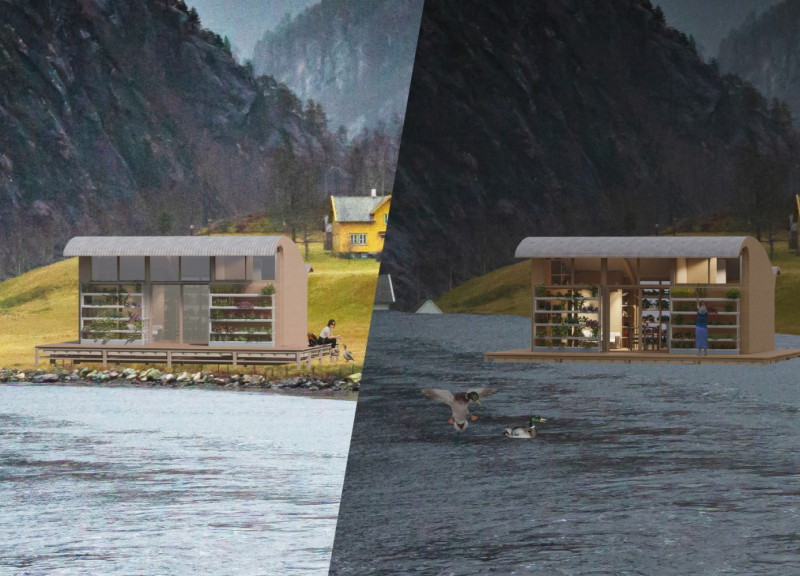5 key facts about this project
The design project, "Over the Flood," tackles the issue of rising water levels caused by climate change through a microhome concept aimed at ensuring safety and comfort in flood-prone areas. Set against the backdrop of a changing environment, the dwelling offers a practical solution by combining adaptive architecture with sustainable living practices. The overall design emphasizes the need for a functional yet responsive home that meets the challenges of its surroundings.
Adaptive Architecture
The microhome is equipped with a floating mechanism that allows it to adjust according to changing water levels. This ensures that the home remains stable and above water, even during floods. A smart system of sensors and tie rods enables real-time adjustments, allowing the house to respond to the movements of water. This design not only offers a safe haven for residents but also represents a new approach to living in areas vulnerable to flooding.
Sustainable Energy Strategy
The project incorporates various sustainable energy practices to reduce reliance on external resources. Solar water heating systems are used alongside hydrokinetic turbines that generate electricity from moving water. These elements work together to support energy independence and minimize environmental impact. The focus on renewable energy reflects an understanding of the need for sustainable solutions in contemporary living.
Modular Living Space
The interior of the microhome features a modular design that allows for flexible use of space. The layout includes a dedicated technical section with essential utilities such as a bathroom and kitchen, alongside a living area that can be adjusted for different purposes. This versatility supports a range of activities, making it suitable for both living and working spaces. It efficiently optimizes the available area, making everyday life comfortable.
Water Management and Food Production
A key aspect of the design is its approach to water management. Rainwater is collected from the roof and stored in a tank underground. This method ensures that residents have a sustainable source of water. Additionally, the inclusion of a vertical hydroponic planting system allows for indoor food cultivation, providing fresh produce with minimal space. This thoughtful integration highlights a commitment to self-sufficiency and resource conservation.
The use of triple-glazed windows in the façade improves energy efficiency while allowing natural light to fill the interior. This feature creates a bright, inviting atmosphere, connecting residents with their surroundings. By prioritizing both functionality and environmental sensitivity, the design presents a practical response to the challenges posed by an evolving climate.



















































